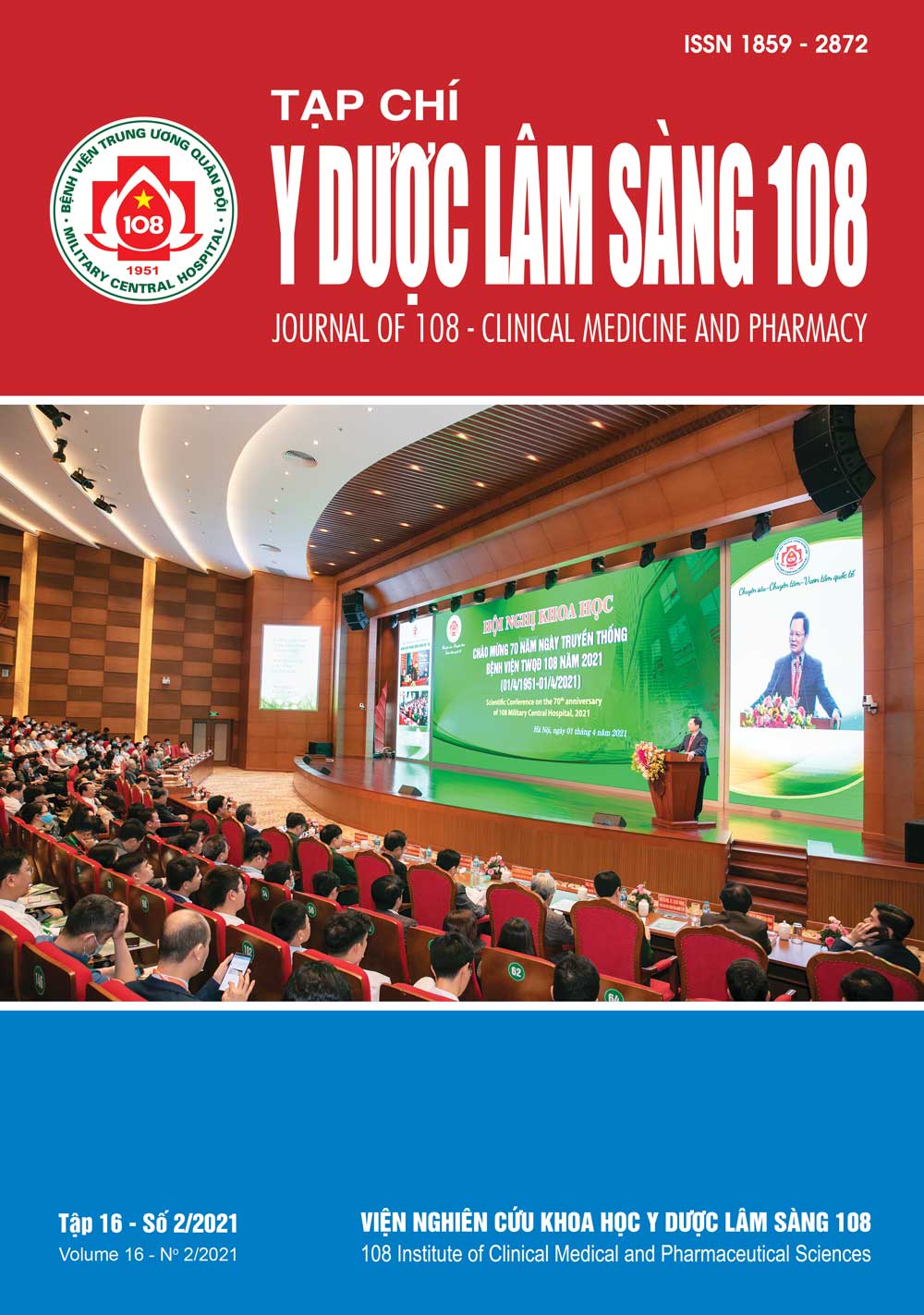Sensitivity and specificity of some psycho-physiologycal tests for early detection children's lead infiltration
Main Article Content
Keywords
Abstract
Objective: To find out the sensitivity and specificity of some psycho-physiological tests in children (age 3-14) with blood lead ≥ 5μg/dL and blood lead < 5μg/dL. Subject and method: 1154 children (from 3 - 14 years old) were taken blood to test blood lead levels by ICP-MS method and to evaluate the intellectual capacity (Raven test, LPS3), reaction time test (simple visual - motor reaction time, simple audio - motor reaction time), memory test (pictures, numbers, words), behaviour test (DBC-P, Vanderbilt), physical index (BMI, Pignet) (depending on age); calculate the sensitivity and specificity of these test. Result: Tests with sensitivity ≥ 57.0% in children with blood lead ≥ 5μg/dL were: DBC-P test, Vanderbilt scale, simple visual - motor reaction time, simple audio - motor reaction time. Tests with specificity ≥ 67.6% in children with blood lead ≥ 5μg/dL were: BMI, Pignet, LPS3 test, Raven test, speech memory test, triangular memory test, animal memory test, number memory test. Conclusion: Some psycho-physiological tests may be of value in the early diagnosis of lead poisoning risk in children, requiring further in-depth research.
Article Details
References
2. Centers for Disease Control and Prevention (CDC) (2007) Interpreting and managing blood lead levels < 10 microg/dL in children and reducing childhood exposures to lead: Recommendations of CDC's advisory committee on childhood lead poisoning prevention. MMWR Recomm Rep 56(8): 1-16.
3. Chiodo LM, Jacobson SW, Jacobson JL (2004) Neurodevelopmental effects of postnatal lead exposure at very low levels. Neurotoxicology and Teratology 26: 359-371.
4. Council on environmental health (2016) Prevention of childhood lead toxicity. Pediatrics 138(1): 20161493.
5. Counter SA, Buchanan H, Ortega F (2005) Neurocognitive impairment in lead-exposed children of andean lead-glazing workers. Journal of Occupational & Environmental Medicine 47(3): 306-312.
6. Daneshparvar M, Mostafavi SA, Zare Jeddi M et al (2016) The role of lead exposure on attention-deficit/hyperactivity disorder in children: A systematic review. Iran J Psychiatry 11(1): 1-14.
 ISSN: 1859 - 2872
ISSN: 1859 - 2872
